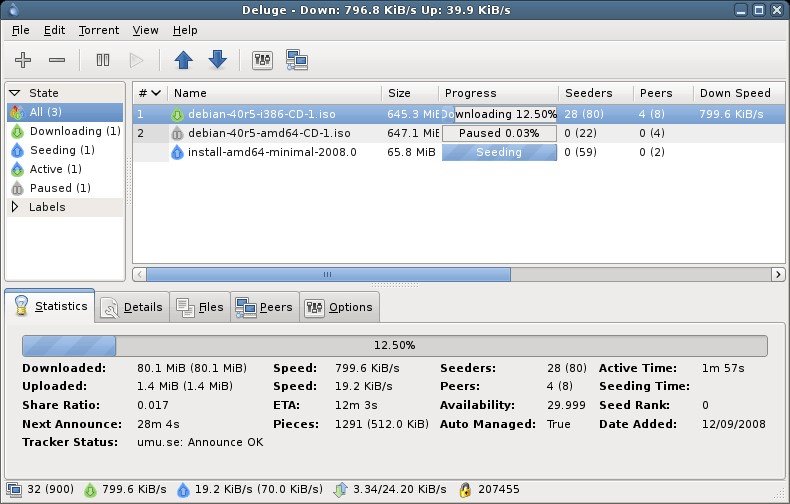

- #Deluge client customize interface how to
- #Deluge client customize interface install
- #Deluge client customize interface upgrade
- #Deluge client customize interface full
- #Deluge client customize interface password
In the command line of the jail create a user with the following command replacing with the User ID from the FreeNAS webUI: pw useradd -n deluge -u -c "Deluge BitTorrent Client" -s /sbin/nologin -w no Create a directory to store the deluge config files mkdir -p /home/deluge/.config/delugeĬhown -R deluge:deluge /home/deluge/ Install Deluge portmaster -P net-p2p/deluge
#Deluge client customize interface password
Change the Shell to nologin and check the Disable password login box. Keep track of the User ID, you’ll need it later.
#Deluge client customize interface full
Set the Username to “deluge” and set the Full Name to “Deluge BitTorrent Client”. If you are installing in a FreeNAS jail create a new user. Otherwise just run this command: pw useradd -n deluge -c "Deluge BitTorrent Client" -s /sbin/nologin -w no FreeNAS Jail If you are installing Deluge in a FreeNAS jail see the instructions in the next section.
#Deluge client customize interface upgrade
Be sure to install or upgrade the ports collection and portmaster before you begin. To install Deluge with just the server and web interface we will need to install from source. We don’t want to have to compile all of the dependencies for Deluge so we will install portmaster and use that to install deluge from source and portmaster will automatically install binaries for dependencies if they are up to date. The binaries for Deluge include the GTK client and require a full GUI desktop environment which is overkill for a server or jail.
#Deluge client customize interface how to
The Web UI is slightly different as the client is a web server daemon deluge-web that connects to a running deluged.This guide will show how to install the Deluge bittorrent client in FreeBSD 9.x. To connect to a remote daemon use the connect command in deluge-console:įor adding torrents directly to the daemon through automatic methods such as with autodl-irssi:ĭeluge-console "connect add $(TorrentPathName) exit" If accessing a local deluged daemon run the following and it will connect automatically: Optional step: Expand Options and select ' Automatically connect to selected host on startup' and ' Do not show this dialog on start-up'.Ĭongratulations! You can now access the Deluge daemon, deluged, on the server via the GTK UI. If this was successful a green tick should now appear as the status for the daemon you just added.Ĭlick on Connect and the Connection Manager should disappear.

If SSH Tunnelling, before continuing Create SSH Tunnel, and for Hostname, below, 127.0.0.2 must be used.If it is not needed you can remove the localhost daemon.Restart deluge and you should see the Connection Manager.In Preferences -> Interface and disable (untick) Classic Mode.The Deluge GTK UI setup require switching the GTK UI from Classic mode to Thin-client mode, then adding and connecting to the remote daemon on the server. The workaround is to replace the localclient line in your user config auth file ( ~/.config/deluge/auth) with the localclient line from the deluged config auth file e.g. This is due to the client automatically authorising using the localhost line in the auth file, which is assumed to be at the same config location as deluged. your login user is user and deluged is running as deluge, you may be unable access to deluged. When attempting to access a daemon deluged on the same machine but running as a different user e.g. You will need to know the server's IP address for configuring clients, for private IP: hostname -I or public IP: curl Ĭongratulations! The server is now setup for remote client access.Ĭlient Setup Accessing deluged service with local UI Client (If using a service substitute appropriate operating system commands):Īlternatively you can edit nf ( deluged must not be running) in the config and change allow_remote from false to true.

To create the config directory and populate with the default files, run and then stop deluged. To debug any problems setting up deluged enable logging and check for errors. Substitute any daemon start or stop commands below with the appropriate service commands. See the service guides to run deluged as a service so that it starts/stops on server boot/shutdown. The Deluge daemon deluged and deluge-console should be installed on the server.



 0 kommentar(er)
0 kommentar(er)
